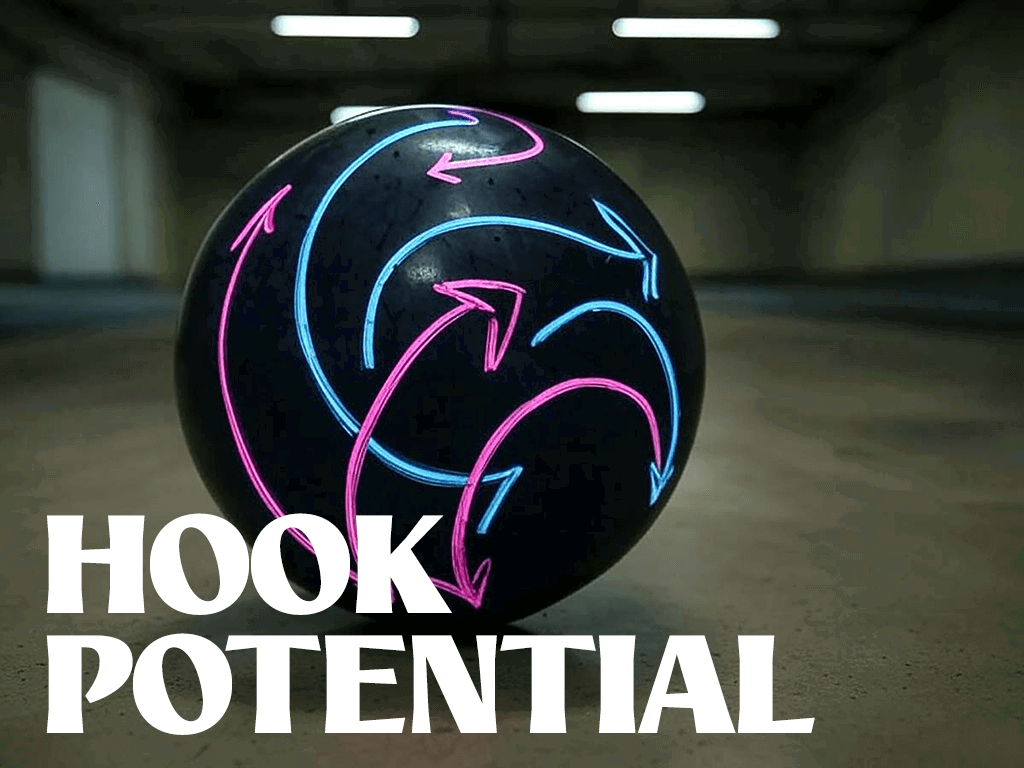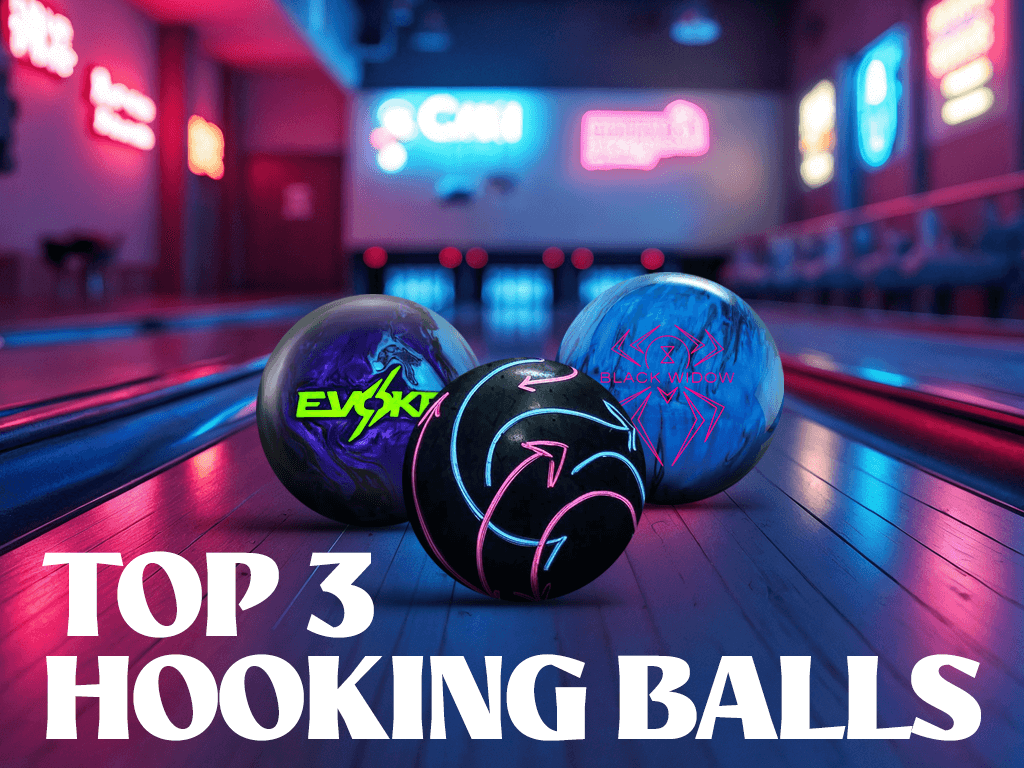Knowledge Hub : Bowling Balls : Hook Potential
updated: July, 2025What is hook potential?

Hook potential in a bowling ball refers to how much the ball can curve, or "hook," as it travels down the lane toward the pins. It’s the ball’s ability to grip the lane and change direction, helping bowlers aim for the pocket (the ideal spot for a strike). Several factors determine hook potential:
Coverstock: The ball’s outer shell. Reactive resin or particle coverstocks grip the lane better, creating more hook than plastic ones.
Core: The inside shape of the ball. Asymmetrical cores with low RG (radius of gyration) and high differential make the ball flare and hook more aggressively.
Surface Finish: A rough (sanded) surface grabs the lane sooner for more hook, while a polished surface hooks later with a sharper turn.
Hook potential matters because it affects how well the ball can navigate oily or dry lane conditions to hit the pins effectively. Balls with high hook potential are better for heavy oil or tricky patterns, while low hook balls suit drier lanes. Bowler style, like rev rate, also influences how much hook you get from a ball.

High Hook Potential: TOP 3 Balls
If you already know everything there is to know about hook potential... take a look at the top 3 balls that really hook on the lanes!
A Deeper Dive: How to Determine Hook Potential
Determining the hook potential of a bowling ball involves analyzing key technical specifications and performance characteristics that influence its ability to curve on the lane. The primary factors are the coverstock, core design, and surface finish, which interact with lane conditions and bowler style to produce hook.
Coverstock: The coverstock, or outer shell, is the most critical factor. Reactive resin and particle coverstocks provide the highest hook potential due to their ability to grip the lane, especially on oily conditions. Solid coverstocks hook earlier with a smoother arc, ideal for heavy oil, while pearl coverstocks offer a skid-and-snap motion, maximizing backend hook on medium to dry lanes. Hybrid coverstocks balance both for versatility. Check the manufacturer’s coverstock type and friction rating, higher friction indicates greater hook potential.
Core Design: The core’s shape, radius of gyration (RG), and differential affect hook. Asymmetrical cores with low RG (below 2.50) and high differential (above 0.050) create aggressive flare and hook potential by increasing lane traction and angular motion. Symmetrical cores offer smoother, more predictable hooks but less flare. Intermediate differential in asymmetrical cores further enhances backend reaction.
Surface Finish: The ball’s surface preparation, measured in grit (e.g., 500 for sanded, 4000 for polished), influences hook. Sanded finishes increase traction for early hook on heavy oil, while polished finishes delay hook for a sharper backend on drier lanes. Adjusting the finish can fine-tune hook potential.
Lane Conditions and Bowler Style: Hook potential depends on oil volume and pattern. Heavy oil requires aggressive coverstocks and cores, while lighter oil favors pearl or polished balls. Bowlers with high rev rates amplify hook, while speed-dominant players may need higher hook-rated balls.
Manufacturer Data and Reviews: Manufacturers provide hook ratings (e.g., Brunswick’s Perfect Scale) and specs like RG and differential. Customer reviews on Bowling.com also reveal real-world performance across conditions, helping assess hook consistency.
By combining these factors, coverstock aggression, core dynamics, surface finish, lane conditions, and user feedback, bowlers can accurately gauge a ball’s hook potential for their needs.










